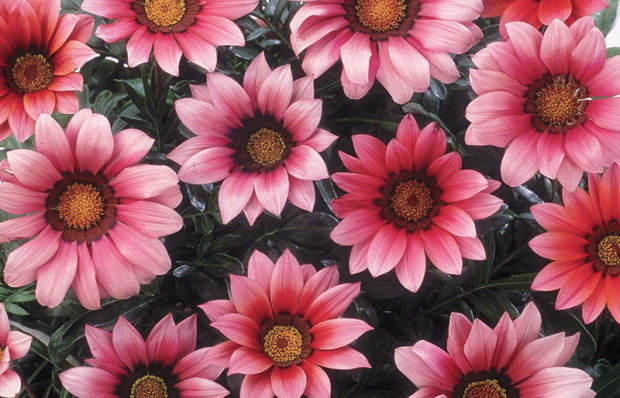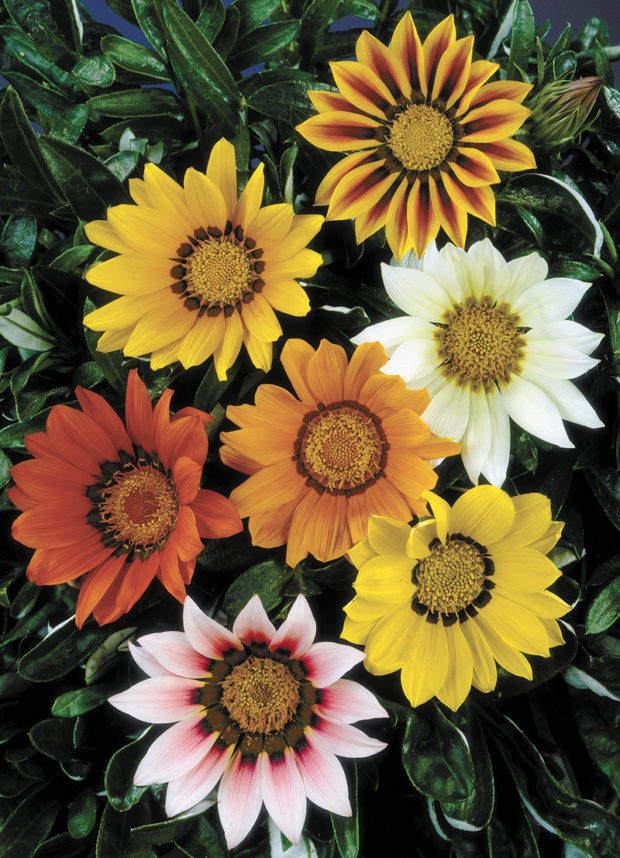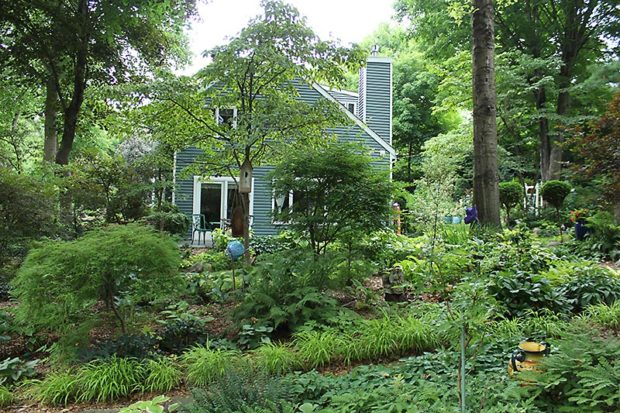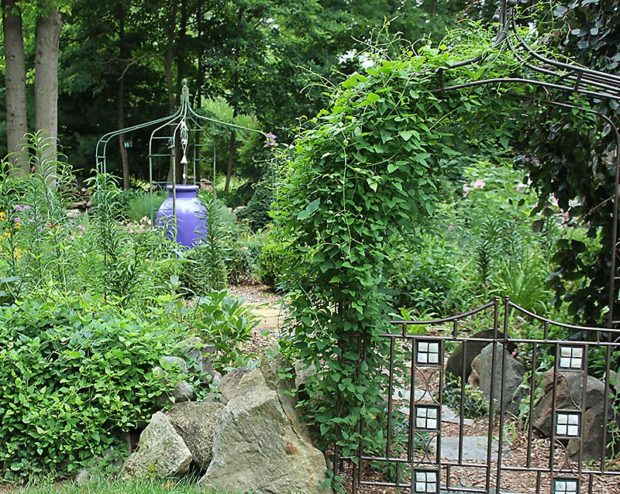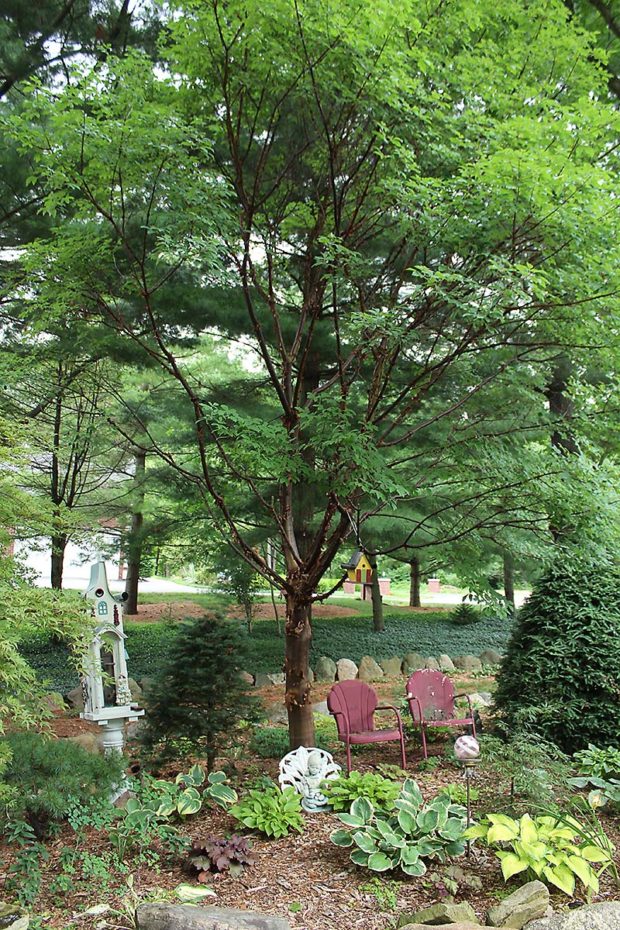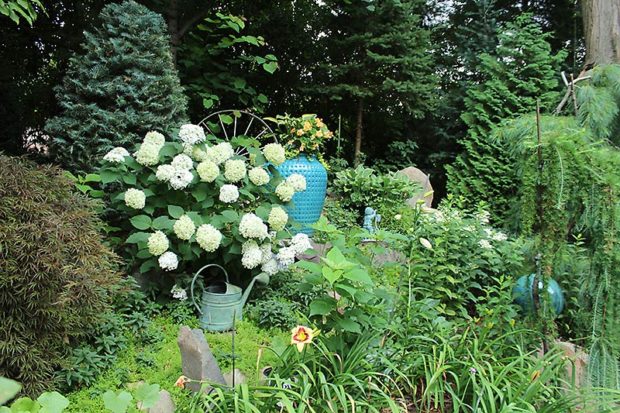Harvesting herbs seems to be something of a mystery to many gardeners. We have become so accustomed to buying them in the grocery store, either fresh or dried, that we are at a loss as to how to pick them out of our own garden to use in the kitchen.
There are a few basic rules to follow. To use them fresh, pick as needed. To dry them for winter use, the plants are large enough in summer for cutting and ready at varying times. The earlier in the summer that you can gather them, the sweeter the flavor. Plus, fewer bugs will have had a chance to dine on them. Cut only one half of the plant at a time, so it will have enough strength to continue growing. Cut only on warm, dry days in the afternoon when the dew is gone and the plants are very dry. Use a rubber band to secure small bunches of the herb and hang in a dark, dry place until crispy dry.
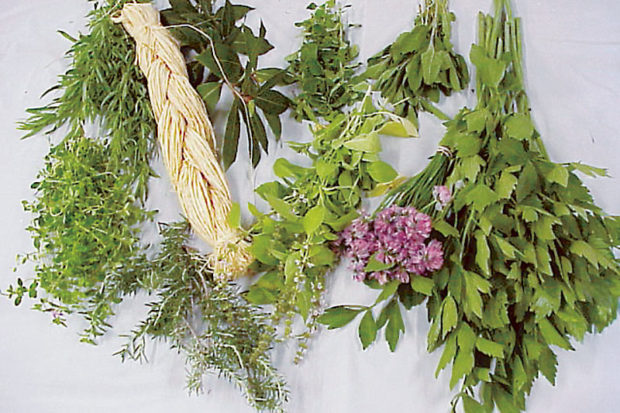
We cannot stress this next step too much: label the bunches. When thoroughly dry, package the whole leaves in jars and store in a dark cupboard away from heat. The flavor will stay wonderful for about one year—just in time for a new harvest next summer.
Kitchen herbal swag
There are decorative ways to dry and hang the bunches in your kitchen. Our favorite method is to make a vertical swag by tying the bunches on a raffia braid that will hang in the kitchen to dry, where they will be convenient for use in the winter.
We start with the braid and begin by tying the first fresh bunches of herbs at the bottom with a single, thick piece of raffia. The bottom bunch is usually a coarse-leafed variety like lovage. We add one bunch at a time, alternating foliage types and even adding some herbal flowers to add visual appeal. Make sure that the bunches are not too large; otherwise the leaves will get moldy before they dry, and ruin the whole thing. The bunches should contain 8 to 12 stems of herbs and be about 6 to 8 inches long. Add a bow of ribbon or raffia at the top. You can tuck garlic bulbs or hot peppers into the bow if you want to. Label the bunches as you go so you won’t forget which one is which after the leaves dry.
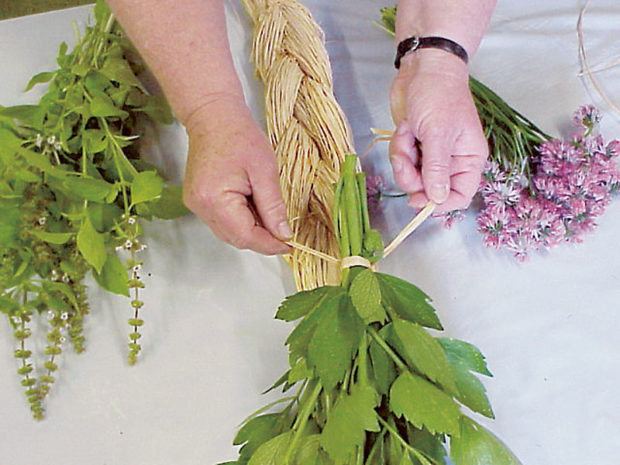
Many of the herbs in our gardens lend themselves to a kitchen herbal swag. We have already mentioned lovage, a large plant with leaves that look and taste like celery. It dries well and holds its flavor. The young stalks are round and hollow; when picked fresh from the garden, they can be used as straws in tomato-flavored drinks. Yum! The plant reaches a height of five feet, so there is always plenty to pick throughout the summer.
French tarragon is another herb that dries and holds its flavor well for the winter. Nice in the swag, it is good in salad dressing or poultry. Sage, with its lovely silvery leaves, looks good in the swag, and the flavor holds all winter for use in poultry stuffing and herb mixtures.
Mints are valuable with their sharper flavors and fragrances, and their flowers are frequently pretty too. The leaves become crispy and break easily after drying, but they are still good to use. Basil is similar to mint, and basil flowers look attractive when they dry. The dark opal basil is especially pretty in the swag, and is tasty on salads all year.
Chives do not dry well, becoming tough and stringy, but the flowers dry and hold their lovely mauve, adding a touch of color. They are edible and can be used in salads or as a garnish on soup. If you want to preserve the chive leaves for winter use, freeze them in a foil wrap. Oregano flowers dry well too, and are pretty in the swag. The leaves and flowers can be used in spaghetti or lasagna dishes. Thyme has tiny leaves and is usually the last or top bunch that is added to the swag. Lemon thyme invites you to use it on seafood, where it is especially appealing. Bay leaves and rosemary are flavorful additions too and have wonderful leaf textures.
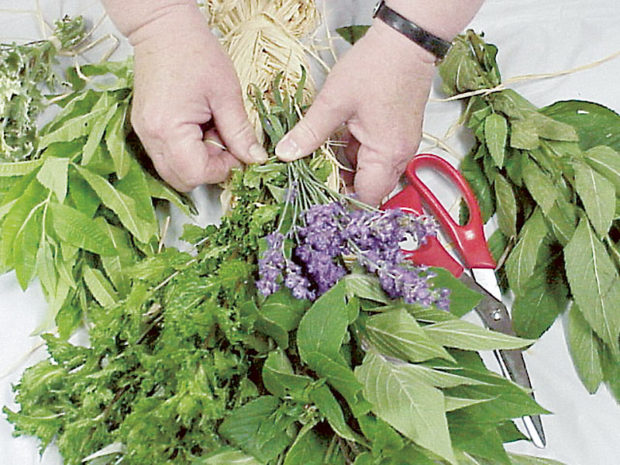
Fragrant herbal swag
Another type of swag that you can make for the bedroom, bathroom, or a room that needs freshening is one made of fragrant herbs. It is made the same way as the kitchen swag, substituting herbs that are aromatic. Instead of using a raffia braid as a backing, you could use a bunch of long artemisia—the silver varieties would be especially appropriate. Or, try a braid of sweet grass with its vanilla fragrance.
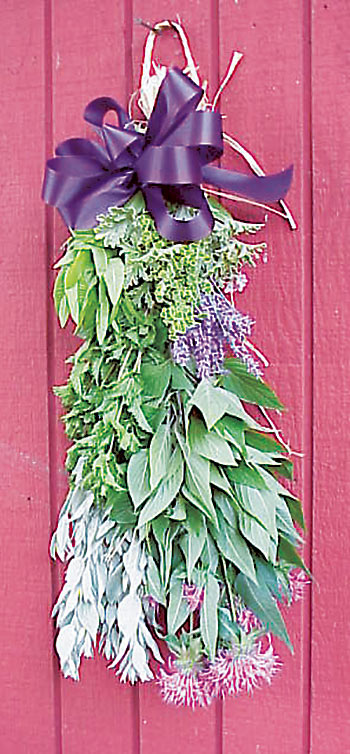
Bee balm (Monarda), with its soft and soothing mint fragrance and pretty flower heads, would be a good addition for both color and fragrance. Of course, lavender flower stalks offer a great fragrance that both calms the nerves and repels bugs at the same time. Hyssop, with both pink and purple flower spikes and rarely even white, has a musk smell that many people find enjoyable.
The scented-leaf geraniums have leaves that come in a dizzying array of fragrances. Some are rose scented, some smell of citrus or other fruit, some mimic mints, and some remind us of almonds or walnuts. All of the leaves dry and retain their fragrance and are welcome additions to the swag.
Fruit-scented sages like pineapple or honeydew are pleasant. Santolina flowers look like golden buttons and are sometimes used in moth-repelling mixes; they would add a rich color to the swag. Lemon verbena would be a delightful aroma to add as well.
After finishing your herbal swag, hang it immediately on your wall out of direct sunlight and enjoy the wonderful aroma as it dries naturally. If you have labeled your bunches, you will be picking off the swag during the winter and enjoying a great recipe with herbs.
Jean and Roxanne Riggs operated Sunshine Farm and Garden in Oakland County, MI.

